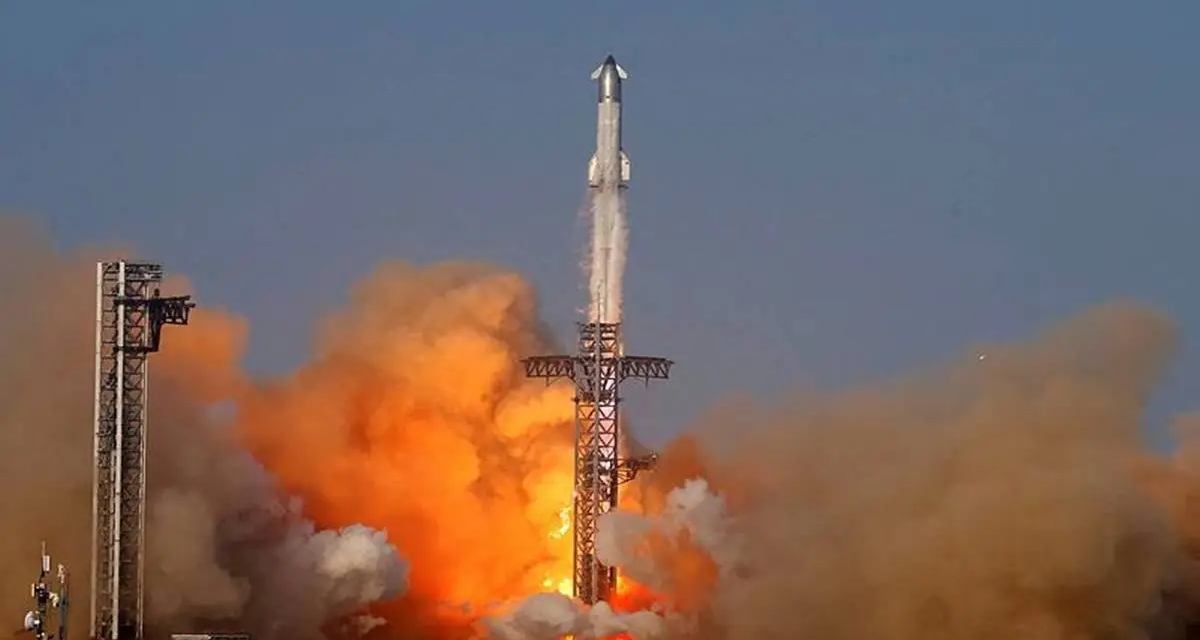In a dramatic and unexpected turn of events, SpaceX’s Starship—billed as the most powerful and fully reusable rocket ever built—detonated during a test launch at the company’s Boca Chica facility in Texas. The incident occurred early Wednesday morning during a planned static fire test, shaking the region and raising new questions about the future of the ambitious Starship program.
A Bold Mission, a Sudden Failure
The launch, part of a scheduled prototype test, was meant to evaluate Starship’s engines, fuel systems, and control mechanisms before a full orbital flight. Instead, just seconds after ignition, the spacecraft exploded in a massive fireball on the launch pad.
Footage of the incident shows the 120-meter-tall Starship vehicle roaring to life before a sudden detonation tore through the base of the rocket. The force of the explosion sent debris flying in all directions, damaging nearby ground support equipment and igniting smaller fires around the pad area. Fortunately, no injuries were reported among staff, who were observing the test from a safe distance.
Initial Reactions from SpaceX
SpaceX officials acknowledged the failure shortly after the event, releasing a brief statement: “Today’s static fire test ended unexpectedly when Starship experienced a rapid unscheduled disassembly at the launch pad. Our team is reviewing the data and will provide more information soon.”
This is not the first time that security protocols and rapid responses have taken center stage in recent news. Just days earlier, fighter jets were deployed after a plane strayed into G7-restricted airspace over Kananaskis, highlighting how sensitive and tightly managed these high-stakes environments are—whether on Earth or in orbit.
What Went Wrong?
While the exact cause of the explosion is still under investigation, early speculation points to a malfunction in the engine or fuel system. The test involved firing all 33 Raptor engines on the Super Heavy booster—a highly complex process involving enormous pressures, cryogenic fuel, and finely tuned coordination.
Any failure in the plumbing, software, or ignition sequence could have led to catastrophic results. Engineers will now comb through telemetry data, video footage, and physical debris to pinpoint what went wrong.
SpaceX’s test philosophy encourages taking calculated risks, and the company has long embraced failure as part of its rapid development cycle. Still, a pad explosion of this magnitude is rare and costly, particularly for a vehicle as large and expensive as Starship.
Implications for the Starship Program
Starship is central to SpaceX’s long-term goals. Designed to be fully reusable and capable of carrying up to 150 tons of cargo, it’s intended for missions to low Earth orbit, the Moon, and eventually Mars. NASA has also selected Starship to serve as the Human Landing System for the Artemis program, which aims to return astronauts to the Moon in the coming years.
This latest setback could delay upcoming missions, particularly any involving NASA collaboration. The agency will undoubtedly conduct its own review to ensure that Starship meets the safety and reliability standards required for crewed missions.
A History of Risk and Resilience
This is not the first time SpaceX has experienced a high-profile failure. Previous Starship prototypes have exploded during landing tests, and earlier Falcon 9 missions have suffered mid-flight anomalies. But SpaceX’s track record of learning from failure, iterating quickly, and ultimately achieving success has earned the company a reputation for resilience and innovation.
The Starship program itself has seen rapid evolution. From early test beds like Starhopper to the towering Super Heavy boosters of today, SpaceX has made visible progress in a relatively short time.
Interestingly, the concept of resilience isn’t exclusive to space exploration. Even in our personal lives, adapting and bouncing back—whether after a failure or simply a design rut—can lead to progress. On that note, you might enjoy exploring 10 easy home decor ideas to refresh your space on a budget, showing how creative thinking can transform challenges into opportunities, right at home.
What’s Next for SpaceX?
Following the explosion, SpaceX will likely pause major tests at the Boca Chica site while crews assess damage, recover debris, and inspect ground systems. Environmental safety checks will also be conducted, as the blast released smoke, fuel residue, and debris into the surrounding area.
Depending on the findings of the investigation, another test launch could take weeks or even months to prepare. However, SpaceX is known for its aggressive timelines and determination to push forward. It’s likely the company will continue constructing new Starship prototypes at its Texas facility and press ahead with its long-term objectives.
Despite this major setback, the vision behind Starship remains unchanged: a fully reusable space vehicle that can revolutionize human space travel and make interplanetary missions a reality.
Final Thoughts
The detonation of SpaceX’s Starship at the launch site in Texas is a stark reminder of the challenges that come with pushing the boundaries of space exploration. While the explosion is a setback, it is also part of a larger journey marked by risk, learning, and progress.
SpaceX has built its legacy not by avoiding failure, but by embracing it as a stepping stone to innovation. As engineers dig into the cause of the explosion and rebuild, the dream of sending humans to the Moon and Mars remains alive—if a little delayed.
In the high-stakes world of spaceflight, every misstep is a lesson. And for SpaceX, the mission is far from over.











